The fertile environment of the Eugene and Springfield area isn’t just great for farming and outdoor recreation. Ever since Eugene Skinner settled near Skinner’s Butte in 1846, our local communities have grown strong institutions too.
Throughout our day-to-day comings and goings, these enduring organizations can seem as constant as the rivers and hills. Yet each had a beginning. They’ve weathered changes, such as new locations and owners. Many businesses and organizations have surpassed 50, 75, even 100 years old. Let’s take a look at how they continue to thrive today.

1890–1899
Eugene’s current population is about 178,056. In the 1890s, only 2,958 folks officially called the area home, according to the U.S. Census of the time. That was up about 165% from the 1880 count of 1,117.
Sharing the joys and challenges of the long, hard Oregon Trail, people from different Christian traditions learned how to understand their differences while appreciating what they had in common, explains Dr. Corynn Gilbert, director of development at Bushnell University. More settlers meant more churches, but they needed ministers too.
“Throughout the West, small divinity schools would pop up, usually near the main public university,” says Gilbert.
The University of Oregon had been founded in 1876 (2024 marks the 130th anniversary of the founding of the chemistry department!), and its first four presidents went to First Christian Church of Eugene. So did a local leader named James A. Bushnell. In 1895, he and others founded the Eugene Divinity School near the UO campus. A similar model evolved throughout the West: Students would take general education classes at the public university. Those pursuing divinity studies would also attend the nearby divinity school, graduate, and establish and lead churches. During the Great Depression in the 1930s, EDS merged in Eugene with a struggling divinity school based in Spokane, Washington, to become Northwest Christian College (and later Northwest Christian University in 2008). Seeking a refresh of their identity in 2020, it became clear that the answer lay in the beginning. They’ve been Bushnell University ever since.
“We had a commitment to diversity since our founding, with a mission to serve all students who sought to attend a Christian university, including women, international students, and students of color,” says Gilbert. “One of the members of the first graduating class in 1900 was a woman. If they were to look ahead, that was visionary. It foretold who we’ve been all along.”
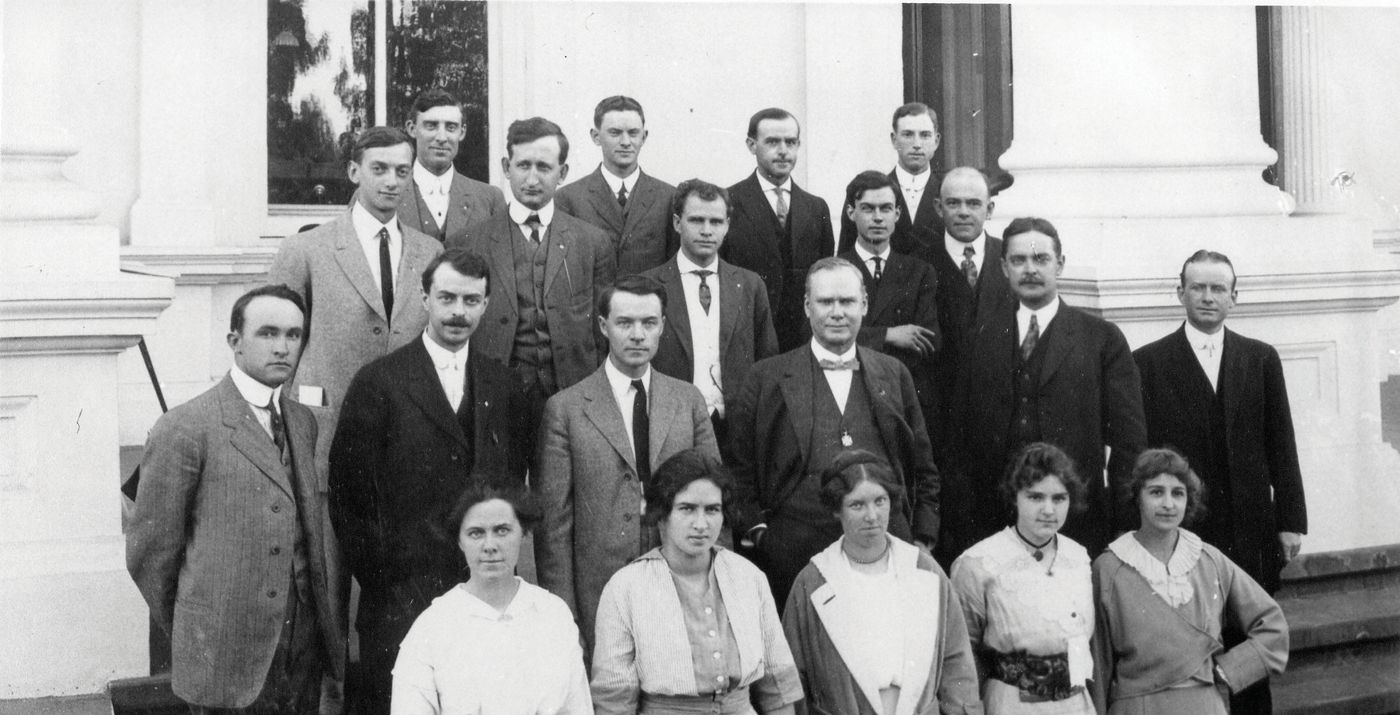
1900–1919
By 1910, Eugene’s population had grown to 9,009. Paul Schatz Home Furnishings began helping people furnish their homes in 1919. There also came a growing recognition that when workers got hurt on the job, they needed help.
In 1914, the Oregon State Legislature created the State Action Insurance Fund, or SAIF. Over the years, “workmans’ comp” has become the more universal “workers’ comp,” but the focus continues to be on safety, and recovery for injured workers.
“One thing that may surprise our founders is how we have grown our expertise in workplace safety and injury prevention,” says Lauren Casler, communication supervisor at SAIF. “SAIF has built the largest team of workplace safety professionals of any insurance carrier in Oregon.”
From the beginning, SAIF also supported industries known for hazards, such as logging, construction, and agriculture. Today, SAIF protects more than half a million Oregon workers, while seeking to reduce injuries and keep premium costs low. Casler wonders what SAIF’s founders would think of Oregon having workplace injury rates lower than the national average, along with a long-haul mindset.
“In Oregon, workers’ compensation coverage sometimes provides lifelong benefits for medical treatment, lost wages, and survivor payments,” says Casler. “The oldest claims for which SAIF is actively providing benefits have an injury date in the 1940s.”

1920–1929
Timber used to be considered so plentiful and cheap that its byproducts, such as wood chips, bark, and sawdust, were treated as disposable. When not fulfilling his sawmill duties working for someone else, Sol Rexius worked on pursuing his feeling that all that timber waste just might be good for something else. In 1928, Sol began hauling loads of “Sawdust Wood” to EWEB and the University of Oregon to be burned for power generation and heat production. Sol also began delivering loads to some of Eugene’s 10,593 residents. Many houses burned sawdust to heat water that circulated throughout the home — providing virtually free heating.
To get that sawdust into sometimes inconveniently located sawdust bunkers, Sol rigged up trucks with long hoses that could blow the sawdust to where it needed to be dumped.
If Sol were alive to see today’s blower trucks, “he would love the space-age aspect,” says Arlen Rexius, Sol’s grandson and co-president of Rexius. “But he would see we’re still handling forest products. We still build the manufacturing equipment, but it’s computer operated and automated now.”
By 1935, Sol had founded his company, Rexius, and was no longer working for anybody but himself and his customers. The last of the old-style chip heaters went away in the 1990s, says Arlen. Today’s Rexius focuses more on making soils and compost. And with 300 employees, the business looks a lot different. However, Arlen is confident that Sol would recognize much about his company and community.
“He’d be happy that we hung onto his beliefs and his style of work, his vision of taking the waste out of mills and turning it into something useful,” says Arlen. “I’d want to tell him that it’s still a family business.” And it is: Arlen’s grandson is the start of the fifth generation.
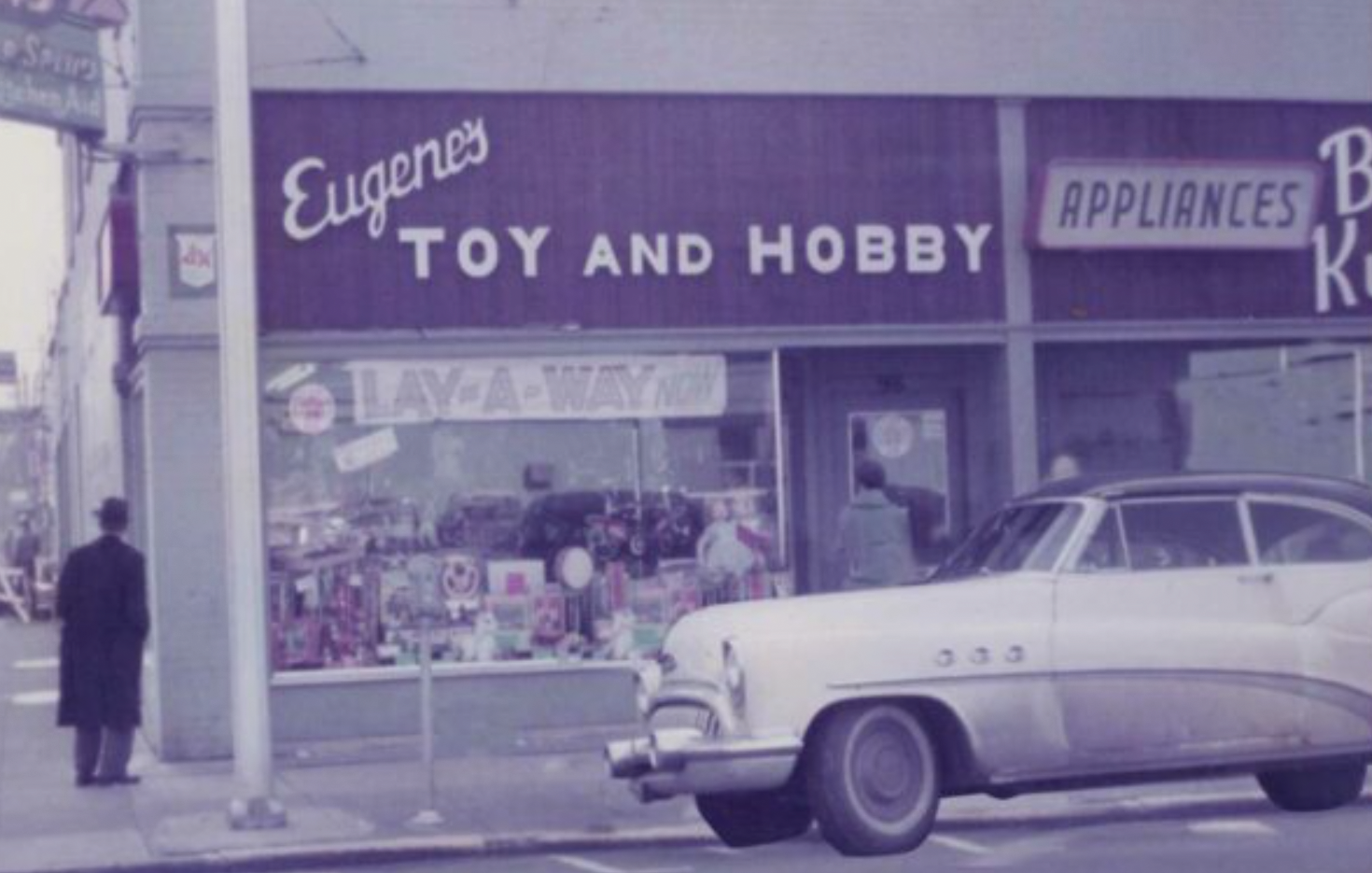
1930–1939
The Great Depression didn’t spare Eugene/Springfield any more than the rest of the country, but that didn’t stop the 18,901 folks who called the area home in 1930. The Fixture Gallery opened in 1934, and Gardner Floor Covering was founded in 1937.
In 1938, E.C. Papé saw the opportunity of a capital equipment dealership, especially if it made customer service and dependability front and center. Today, The Papé Group is a leading supplier of heavy equipment throughout the West. From construction and forestry to agriculture, trucking and warehousing, Papé supports the truckers, loggers, construction workers, and farmers who help build the West. Papé currently has more than 160 locations and 4,500 employees across nine states. Yet in downtown Eugene, 1932 saw a much more light-hearted endeavor get underway.
Across from what was then the Eugene Hospital, Perry Agerter bought a business called Magazine Exchange. Around 1936, they sold a little game called Monopoly (cost: $1.98), and they soon added not only more games, but lines of toys. Over the next five generations, the Agerters transformed Magazine Exchange into something very different: Eugene Toy & Hobby.
“Perry’d be most surprised by the variety of products we carry,” says Shanna Kenney, “everything from magazines, where he started, to science kits, remote-control cars, trucks, boats and planes, arts, crafts, and trains.”
While the variety might surprise Perry, “what’s stayed the same is our passion for the work we do here,” Kenney says. “Everyone genuinely enjoys coming to work because it’s more than just a job. It’s a place where we catch up with each other and we get to know our customers on a first-name basis.”
1940–1949
As the Depression faded and World War II came and went, the local economy continued changing. Eugene’s 1940 population had slightly grown, to 20,828, and those folks needed financial services that reflected postwar opportunity and optimism. Jones & Roth began offering accounting and business advising in 1946, followed by banking services at Oregon Community Credit Union, or OCCU, the following year.
I-5 didn’t exist yet. But with 1.5 square miles and a population of 3,805, Springfield and its business community were growing too. In 1949, local businesses came together to form the Springfield Area Chamber of Commerce.
“The founders would be surprised by the growth of the organization and the significant growth and diversification of our local economy,” says Vonnie Mikkelsen, chamber president. “They would appreciate that to be a result of decades-long resiliency, stewardship, and innovation.”
They might also be surprised to learn that the Southern Pacific Railroad Train Depot, once a rail hub, is now the chamber’s base of operations. But they’d be happy to see familiar institutions too: Many founding organizations continue not only to operate, but to serve as chamber members.
“I’d invite them on a tour of the town followed by a meeting with a room full of chamber members and civic leaders,” says Mikkelsen. “I’d thank them for their foresight and efforts of their time.”
Then, Mikkelsen would kick off a casual roundtable conversation with one question: “How are we doing and what opportunities are we missing?”
Why that question?
“Because I often wonder that myself and would find it so interesting to pair the ponderings of the past with that of the present from the perspective of people who genuinely care about our chamber and our community,” says Mikkelsen. “I imagine the conversation would begin with great fun and end in hope and optimism for the future.”
In honor of their 75th anniversary, the Springfield Chamber is also seeking physical items, photo submissions, and future messages to be sealed in a time capsule later this year. The capsule will be opened in 2049, when the chamber turns 100.

1950–1959
As the postwar economic boom swept the country, Eugene’s 1950 population stood at 35,879. In 1955, Bi-Mart began its journey to become a regional favorite, opening its first store in Yakima, Washington. Today, Bi-Mart is headquartered in Eugene, with 79 locations through Oregon, Washington, and Idaho.
New shopping, work, and recreation opportunities meant that more Eugenians wanted an easier way of getting around. In 1950, a man named Harry Sheppard left his job as a Ford manufacturer representative. Relocating himself and his family from Winnipeg, Canada, to Eugene, Harry sensed that he could find opportunity in the car business, his own way.
Domestic car brands already had dealers in the area, so Harry pivoted to imports. He and his son would go to Portland, buy a Hillman Minx or an MG, and return to the filling station Harry had purchased on the corner of 10th and Olive in Eugene.
In the 1960s, Sheppard moved into what is now Kelly’s Appliances on W. 6th Avenue. From there, Fiats, Land Rovers, Volvos, and Jaguars began roaming local roads. After a tour during the Vietnam War, John Sheppard returned and took over the business from his dad. Starting in the 2000s, John began working with Phil Speers on transitioning ownership. In 2010, Phil took over Sheppard Auto Group, and six years later, John passed away from cancer.
Today, Phil has continued to evolve Sheppard Auto Group. On 20 acres on North Game Farm Road, Sheppard Auto Group tripled its size, complete with a 55-bay service center. With sales of hundreds of vehicles per month, the company has come a long way from Harry’s “one customer at a time” origins. But if Phil could send a message back in time to Harry Sheppard, he knows exactly what he’d say.
“I would thank him,” says Phil. “He had a dream to own and operate his own business. To carry on that legacy 75 years later, it’s hard to comprehend. I’m in my office looking out over my campus because of what he decided. I’m full of gratitude and appreciation.”
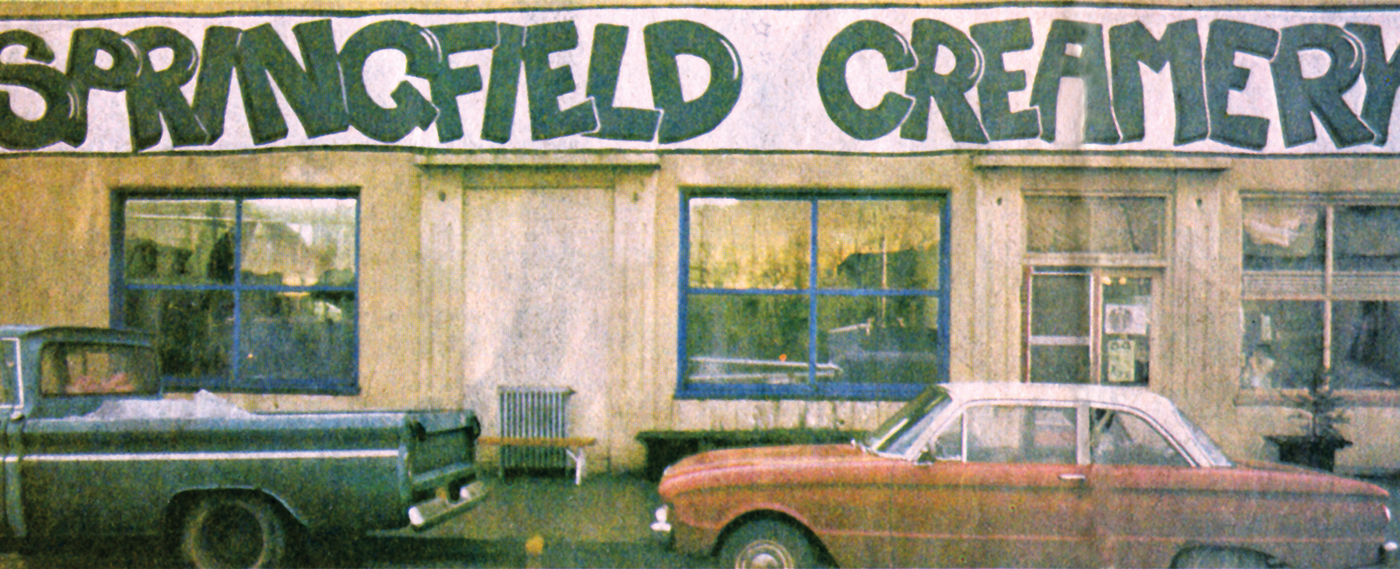
1960–1969
And then there was the ’60s, a monumental decade in Eugene’s history. In 1969, the first Oregon Country Fair was held and White Bird Clinic began providing no-judgment, no-questions medical treatment and crisis aid. The same year, near a bend in the Willamette River, the Valley River Center pioneered the mall as a way for people to shop indoors year-round.
In 1960, Builders Electric was wiring up electrical service for homes and businesses. And two newlyweds founded a creamery, to develop delicious dairy products for Eugene’s 50,997 residents. Sue Kesey understood the business and financials. Chuck Kesey, with a dairy science degree from Oregon State University, would build on his experience growing up around his dad, who’d worked as a manager for Eugene Farmers Creamery.
While the Keseys initially focused on milk production and delivery, by 1969 they sensed that people wanted something from dairy other than just milk and cheese. It turned out that the Keseys’ new bookkeeper, Nancy Van Brasch Hamren, had years of experience making her own yogurt, based on recipes from her grandmother in San Francisco. The Keseys began experimenting, and Chuck added a little something else: acidophilus. The Keseys believe they were the first to add this beneficial bacteria to yogurt, and before they knew it, people were calling to ask for “Nancy’s yogurt.” Since then, Chuck and Sue have seen many things change in the local area, but “what surprises us the most is the things that have not changed,” they say.
“All the little natural food companies that started decades ago with wild ideas, have survived and are still here in the area,” Chuck and Sue say. “We are part of that core group who started in the 1960s and 1970s, along with companies like Toby’s, Glory Bee, Surata, and Golden Temple. While some have changed, many of us are still here, working to make good food every day.”
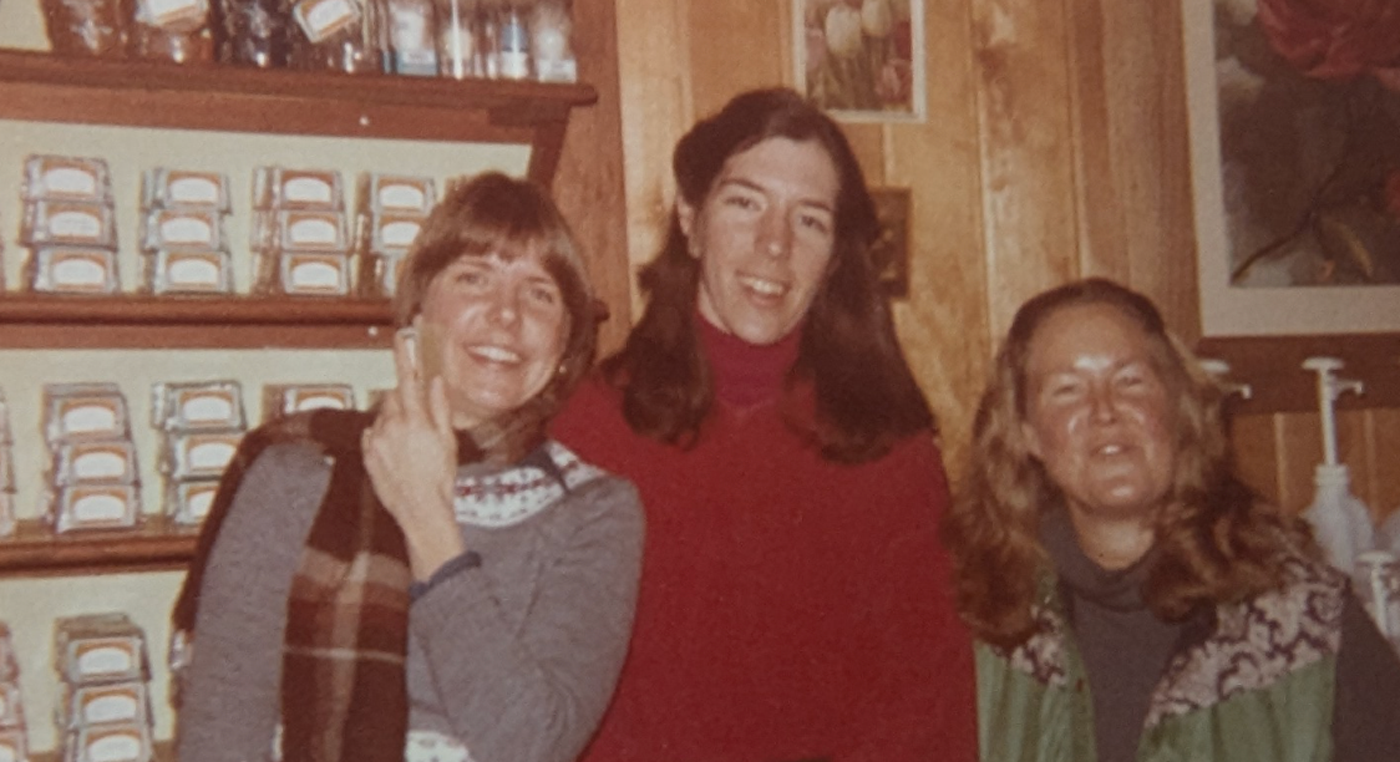
1970–1974
The 1970s brought a mixed bag to America. The Vietnam War ended. The OPEC oil crisis sent energy scares and scarcity nationwide. But throughout the 76,346-strong Eugene area, people continued to innovate and to start their own businesses and other local institutions. 1971 saw doors open for Sundance Natural Foods and BRING Recycling.
In 1970 alone, Eugene saw the kickoff of The Kiva Grocery, behavioral health services resource Shelter Care, athletic products brand Richardson Sports, community services provider Looking Glass, and the law firm Hutchinson Cox. Eugene’s Saturday Market and the Oregon Bach Festival convened for the first time. The Kingsford Charcoal plant on Marcola Road is about 53 years old and makes about 100,000 tons of charcoal. The company was founded in 1920 by E.G. Kingsford and his brother-in-law, Henry Ford. Today, Kingsford converts more than one million tons of wood waste into charcoal briquets every year, making Kingsford the leading manufacturer of charcoal in the United States.
Seeing opportunity in the area’s real estate market, Ed St. Clair earned his real estate license and founded a brokerage carried on today by his wife, Adrienne St. Clair. The St. Clairs have always advocated being active members of their community and role models for the next generation coming up, values that came with them through Ed’s youth and which has shaped their business approach.
“Back when I was in college and Ed’s father was in real estate, they owned property in Colorado,” recollects Adrienne. “They had horses. For the Fourth of July parade, they rode in the parade. When you live in a community, you support the community.”
Throughout the area, people wanted to expand the options for getting around town. Until 1969, a private company, Emerald Transportation System, had run the local transit system, but it went out of business. The Oregon State Legislature in turn authorized new public transit districts throughout Oregon, to be funded via payroll taxes. A four-person board of directors administered the new Lane Transit District. On November 23, 1970, LTD began making local rounds, thanks to two vans and 18 buses. And these buses were a far cry from today’s fleet running battery electric, hybrid, and 99% sustainable fuel (R99).
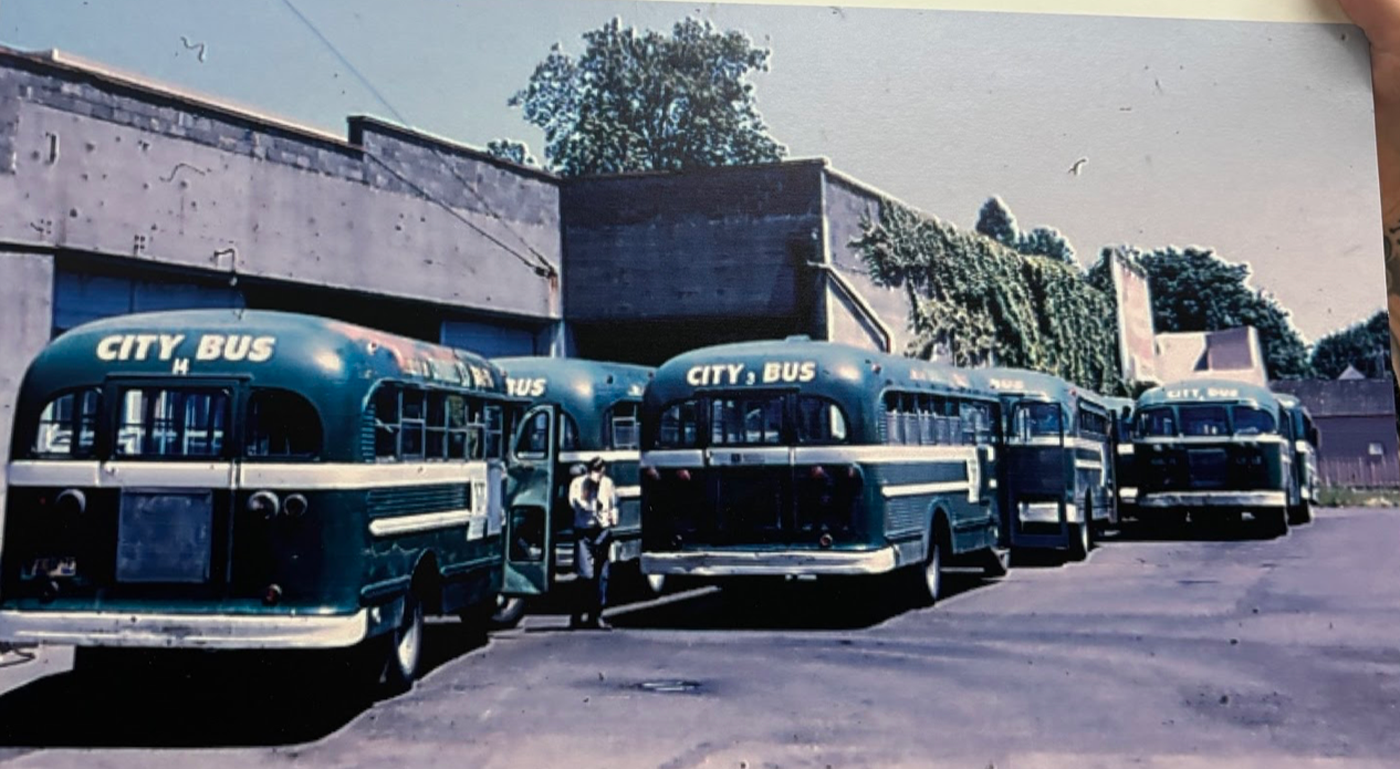
“In 1970, LTD was buying our ‘green meanies’ used,” says LTD archivist Carrie Stewart. “One of our buses had originally been used to transport chickens. It didn’t even have seats. Today’s wide acceptance and usage of EmX, our bus rapid transit, or BRT, with our clean buses that come straight from the manufacturer? The original board would love this.”
2024 welcomes a fresh bunch of new inductees into the 50-year club, including 1974’s Old Dominion Collision Repair Center, Forrest Paint, Uncommon Scents at the Meridian, and Lazar’s Bazar.
“Uncommon Scents was about developing healthy body care products right from the start and offering refills on bottles to keep them out of the landfill,” says owner and co-founder Eva Promen. “Sundays at Fifth Street Market in the late 1970s was magical: good coffee, good books, good pastry, good scents, and good company, all in one place.”
Today Promen prides herself on the quality and sustainability of Uncommon Scents’ offerings, including their own lines of body care and blended fragrance products. If she could, she’d give herself back then a hug and a pep talk.
“Uncommon Scents has offered me the opportunity to be creative, to learn business, and to give to the community that supports us,” she says. “We are grounded and clear about what our little store represents to our little city as the city grows and will continue to change.”
2025 and beyond will see more businesses cross the 50-year mark, including 1975’s Prince Pucklers Ice Cream and J. Michael’s Books, 1976’s Fisherman’s Market, 1977’s Down To Earth, and 1978’s Sy’s Pizza. Perhaps they too will be like so many of the other founders and those who have carried on their legacies, finding what Eva Promen describes as “lots of work, and lots of fun!”


